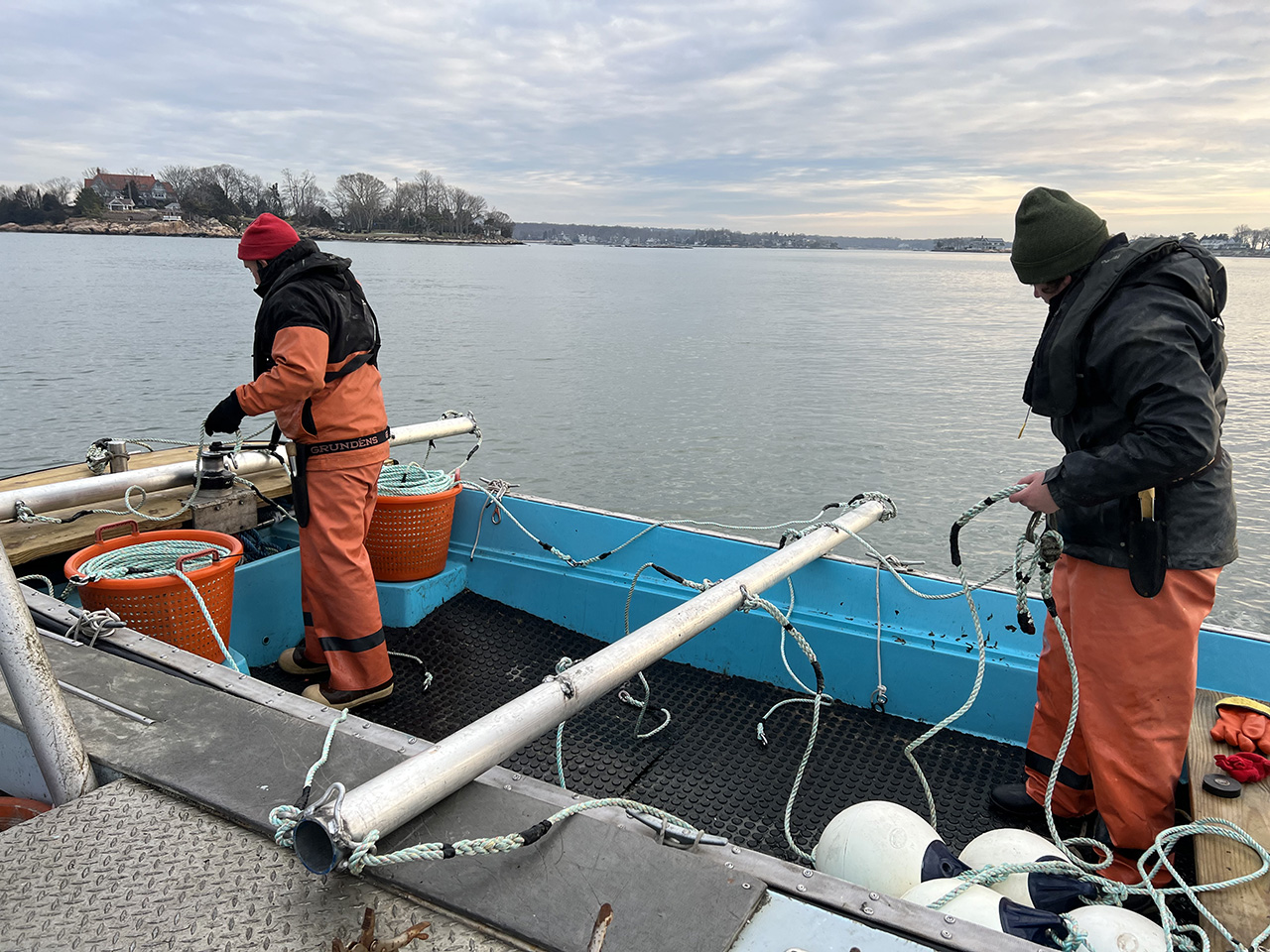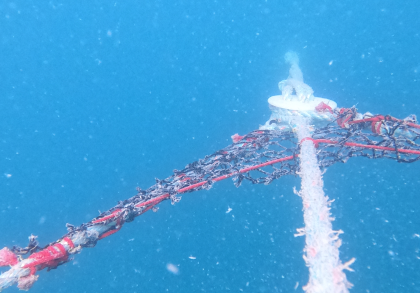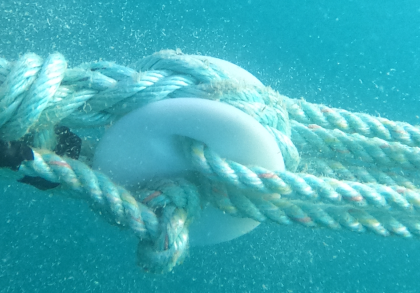Back to: Farm Installation
As you’re installing the bones of the 5-line array, you might find that it’s difficult to connect the second end spreader bar to the anchor line on the far end of the system, especially if the system has been pre-tensioned. You’ll know if this has happened because as you walk your boat down the dummy line, paying out the outermost growlines of your 5-line array, you won’t be able to make it all the way to the far anchor before running out of length of your growlines. It will feel as if you’ve come up short. If this is the case, you’ll need to use an extension line to help you bridge the gap in the system and make the connection between the bridle lines to the anchor line.
To do this, tie an extension line to the bridle lines connected to your second end spreader bar, and drop the spreader into the water. Then continue along the dummy line until you reach the far anchor line in the boat. Use either a line hauler or a come-along to pull in the extension line and drag the end spreader in the water towards the second anchor line. Eventually, you’ll connect the bridle lines to the anchor line loop with a soft shackle.
Watch how this process is accomplished on the GreenWave farm.

Alternative Configuration: Use a Deadeye
An alternative connection point for the junction between the anchor line and the 5-line array bridle is to integrate a deadeye tensioning system. The advantage of a deadeye system is that it allows you to adjust the tension of the array after the anchors have been set – including relieving tension so that you can make growline connections. The disadvantage is that it is one more design element to add to the system, and deadeyes can become fouled throughout the season, which makes them hard to adjust.
Deadeyes function much like a built-in block and tackle system, and allow you to create and relieve tension within the 5-line system. Each deadeye has 3 holes and are used in pairs. One deadeye is attached to the anchor line while the other is attached to the spreader bridle. A line called a lanyard is run back and forth between each deadeye. Pulling in on the lanyard brings the pair of deadeyes closer together, tensioning the system. Releasing the lanyard moves the pair of deadeyes further apart, adding slack to the system. The distance between the deadeye pairs will determine how much tension you can put in the system. We suggest having at least 15-feet between the pairs of deadeyes and at least 10-feet of extra lanyard line when deploying the system. This will allow you to tension and slack the system as needed.


Watch this video of a deadeye system integrated between the anchor line and the bridle lines, as seen underwater. (Note that this system has twisted, ideally the system should be free of twists.)